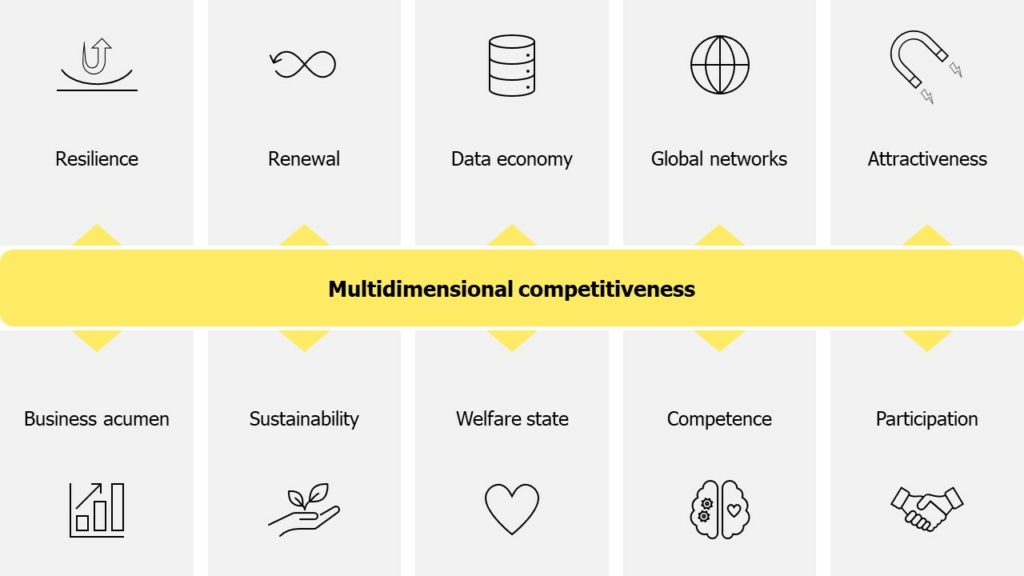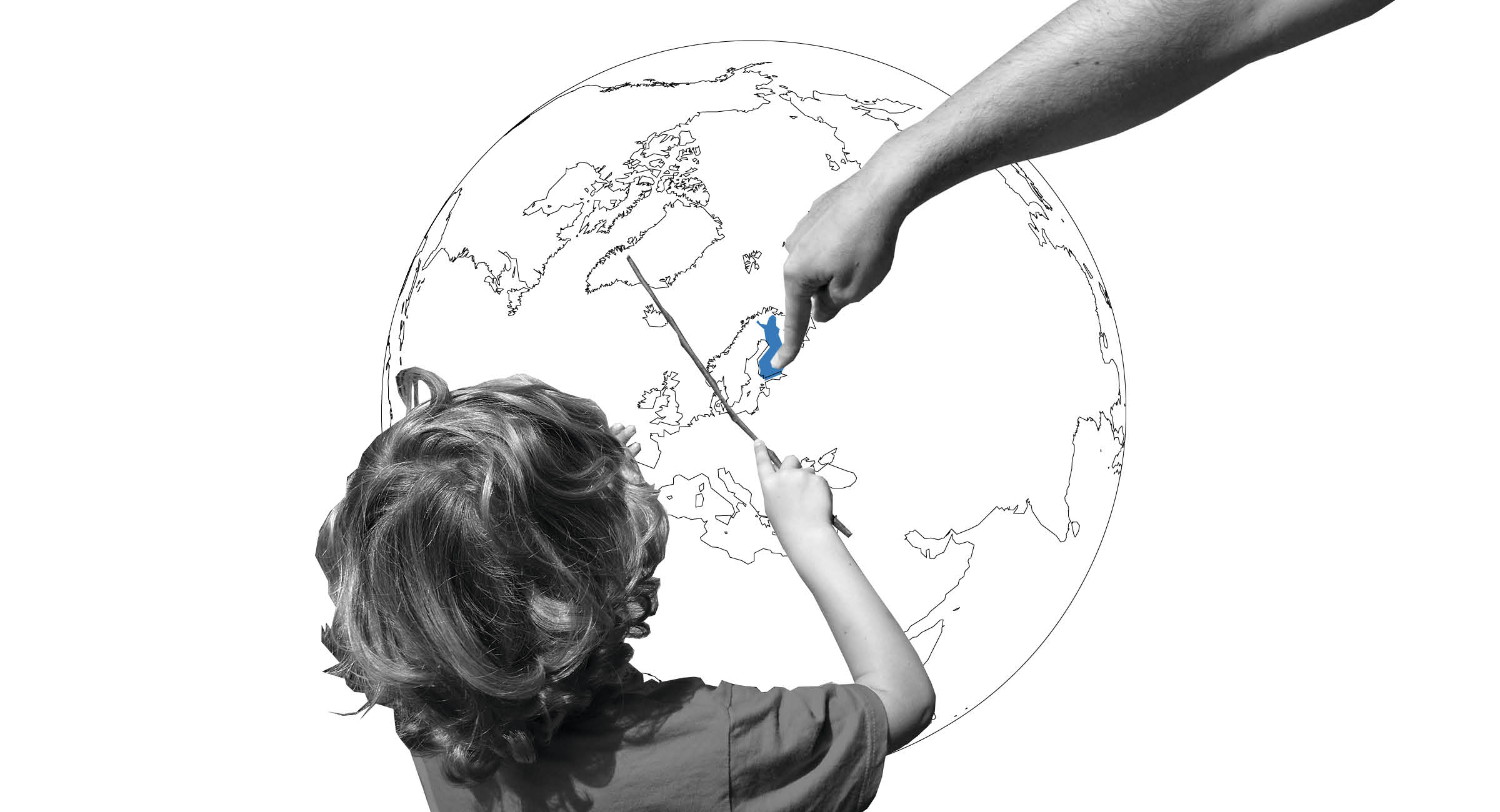Economic competitiveness is a multidimensional concept that can be analysed on various levels, for example from the point of view of a product, firm, or regional or national economy. Sitra’s foresight work focuses on national competitiveness, which is a systemic concept that includes both the competitiveness of firms and their operating environment. Particular attention is paid to the dynamic forces and trends that could shape Finland’s competitiveness in the long term. This article summarises the findings of Sitra’s foresight work on the future of competitiveness.
The Finnish discourse on competitiveness could learn from overseas
According to a media analysis commissioned by Sitra, the current discourse on competitiveness in Finland largely concentrates on short-term cost and price competitiveness. Regulation and taxation are widely considered to weaken firms’ competitiveness. Competence, research and development, resilience and the society’s capacity for renewal are also deemed to be important factors in competitiveness.
When the discourse in Finland was compared with similar discussions in international English-language media, targeting a more global audience, interesting differences in focus emerged. Internationally, the emphasis is more multidimensional and future-oriented. High added value is a more prominent determinant of competitiveness than low costs. Leadership and sustainability are also seen as competitive advantages.
Although the domestic and international media samples are not directly comparable given the different audiences, it seems that in Finland the discourse on competitiveness (and perhaps also national discussions in other countries) could be enriched by incorporating more elements from the international discourse.
Another media study commissioned by Sitra, which focused on discourse on the future of the economy, found similar short-termism and lack of pluralism in Finland.
Resilience and renewal capacity are keys to future competitiveness
In 2021, Sitra organised a foresight process with 25 economic and sustainability experts from Finland that aimed to bring more future orientation to the debate around competitiveness. The experts produced a “future competitiveness map” for Finland, which includes 10 factors that are particularly important for Finland’s long-term prosperity and well-being. We will highlight a few of them below.
The term “multidimensional competitiveness” was placed at the centre of the map because competitiveness is shaped by many factors and can have many goals, such as economic prosperity, vitality and sustainable well-being.
The recent ecological, geopolitical, financial, energy and food crises have underlined the importance of economic and social resilience and renewal capacity. Increasing efficiency and productivity have been the dominant goals in the world economy for many decades. However, there is an inherent trade-off between systemic efficiency and resilience. The global crises and the growing interdependence, complexity and uncertainty of the world have revealed the brittleness of highly streamlined and efficient economic processes.
Improved resilience demands increased cognitive variety from individuals and decision-making as well as more structural variety and degrees of freedom in organisations, the economy and society as a whole. In science and business, this means aiming for more radical breakthroughs and innovations which combine different types of knowledge and expertise. At the level of the national economy, improved resilience calls for strategic innovation and industrial policy that can diversify and upgrade the economic structure.
Open and participatory processes can diversify the economic discourse and knowledge base of decision-makers and innovators. For example, young people often feel excluded from economic discussions.

Source: Hämäläinen (2022), Kilpailukyvyn tulevaisuus, Sitra, Työpaperi, 21.6.2022
The growing integration and interdependence of the world economy and the increased international mobility of firms, investors and talent have underlined the importance of global networks and attractiveness for competitiveness. Participation in global networks is crucial for Finnish firms and policymakers to understand the emerging changes in the operating environment and to identify potential international partners. Finland’s attractiveness, in turn, can be improved by a competent work force, world-class research, development and innovation activities, and a predictable and attractive institutional environment.
Firms must be attractive in the eyes of all stakeholders, not just the shareholders. Sustainability has become an important determinant of competitiveness in recent decades. The standards for responsible business continue to rise as the current responsibility norms become taken for granted. In the long term, the competitiveness of firms will demand continuous anticipation of the trends and solutions in sustainability and responsibility.
Foresight helps to challenge old assumptions and frameworks
The rapid transformation of the world economy requires the capacity to challenge the old assumptions and frameworks about the economy and competitiveness, their future and even the overall goals. The new visions of a more fair and sustainable economic system may help build such capacity.
Foresight processes that search for new visions of competitiveness should include multiple perspectives and draw on the knowledge of various fields of research, practitioners and policymakers. They should also be sensitive and open to the development of entirely new competitiveness factors, such as sustainability and digital platforms in recent years.

